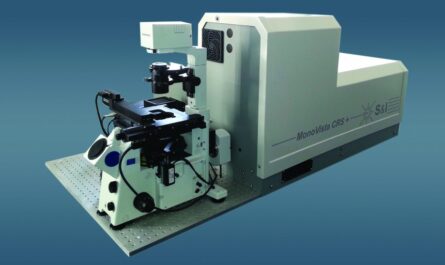
What is Intra Abdominal Pressure?
Intra abdominal pressure (IAP) refers to the steady state pressure concealed within the abdominal cavity. It is measured in millimeters of mercury (mmHg) and under normal conditions for healthy individuals ranges between 5-7 mmHg. However, during times of illness or injury, the pressure inside the abdominal cavity can rise to dangerous levels referred to as intra-abdominal hypertension (IAH).
How Does Increased IAP Impact the Body?
When Intra Abdominal Pressure increases beyond the normal range it can negatively impact the body in several ways:
Respiratory Impairment – Elevated IAP can mechanically impair the respiratory system by compressing the diaphragm and lungs. This reduces lung volume and compliance making it difficult to breathe.
Kidney Dysfunction – Higher pressures are transmitted backwards and can impair renal blood flow leading to renal ischemia and kidney injury/failure.
Gut Ischemia – Tissue compression of the mesenteric blood vessels reduces intestinal blood supply which can result in gut ischemia and possible necrosis or death of intestinal tissue.
Other Complications – Increased IAP has also been associated with higher rates of nosocomial infections, adult respiratory distress syndrome, multiple organ dysfunction syndrome and increased mortality. Early detection and management of raised IAP is crucial.
How is IAP Measured?
Several methods and devices have been developed by clinicians and manufacturers to monitor IAP either directly or indirectly:
Bladder Pressure Measurement – Considered the gold standard method. A Foley catheter is inserted into the bladder and connected to a pressure transducer. Saline is instilled and pressure readout reflects IAP. Requires catheterization but minimally invasive.
Stomach/Rectal Pressure Measurement – Techniques that insert catheters into the stomach or rectum for pressure readings. Considered less accurate than bladder due to variable organ pressures and compressibility.
Abdominal Percussion – Manual method to assess abdominal tension or compliance qualitatively rather than numerically. Subjective and less reliable than instrumentation.
Intraperitoneal Dialysis Fluid – For patients on peritoneal dialysis, fluid bag pressure correlates with IAP. However, only applicable to that patient subset.
Imaging Techniques – Ultrasound or CT may estimate IAP levels indirectly but not practical for continuous monitoring. More appropriate for research studies.
Electromagnetic Devices – New non-invasive devices using electromagnetic sensors placed on the abdominal wall to detect changes associated with IAP. Early research stage currently.
While no perfect solution, bladder pressure monitoring via a simple urinary catheter remains the predominant clinical tool for quantifying and tracking IAP in at-risk patients. Automated devices now connect to hospital information systems for real-time surveillance.
Novel Devices for IAP Measurement
Research continues into next generation IAP monitoring platforms to overcome current method limitations:
Gambro IntelliWrap – A patented adhesive wrap containing an inflatable abdominal pressure sensor that secures to the abdomen for continuous non-invasive readings. Supports enhanced patient mobility compared to indwelling catheters. Clinical validation still ongoing.
Sentien Biotechnologies Abdometer – Another adhesive patch system utilizing force sensitive resistors and MEMS pressure sensors for externally measuring IAP trends. Aims for improved accuracy, ease-of-use and reduced risk of infection. Still in early testing phase.
Endorest Intracavity Pressure Monitor – A small disposable implant inserted surgically that wirelessly transmits IAP values to a receiver unit. Potential for long term implantation monitoring in high risk patients. Animal studies recently commenced.
Other efforts focus on magnetic resonance, thermal or ultrasonic techniques that could circumvent invasiveness altogether. While promising, more refinement is required before commercial availability and widespread clinical integration. Overall, safer monitoring with reduced complications remains a shared goal.
Applications of IAP Monitoring in Clinical Settings
Routine measurement of IAP benefits a variety of at-risk hospital patients:
Intensive Care Units – Critically ill or trauma patients may require close IAP surveillance for early detection of IAH or abdominal compartment syndrome (ACS). Goal-directed resuscitation based on IAP values.
Postsurgical Wards – Monitoring post-op surgical patients, especially those undergoing extensive abdominal or vascular procedures, for possible IAP rise related to edema, bleeding or ascites.
Burn Units – Thermal injury patients prone to fluid resuscitation induced IAH; volume status adjusted to maintain safe IAP ranges.
Trauma Centers – Severely injured trauma victims at high risk for ACS secondary to hemorrhage, shock, swelling or abdominal packing/closure challenges. Serial IAP data useful for patient management.
Research Trials – Quantification of IAP integral to clinical investigation of new therapeutic strategies, medical device interventions, pharmaceutical agents and more.
Overall, minimally invasive monitoring devices have enhanced ability to promptly recognize abnormal intra-abdominal pressures and guide appropriate treatment protocols across subspecialty clinical environments. Widespread adoption continues growing internationally.
In summary, this article has provided an overview of intra-abdominal pressure, its measurement using both established and novel devices, implications of increased pressure for patient health, and applications of IAP monitoring in various clinical settings. Quantitative surveillance remains vital for optimized resuscitation and outcomes in at-risk populations presenting abdominal compartmental challenges. Further advances aim to establish even safer, less invasive solutions.
*Note:
1. Source: Coherent Market Insights, Public sources, Desk research
2. We have leveraged AI tools to mine information and compile



